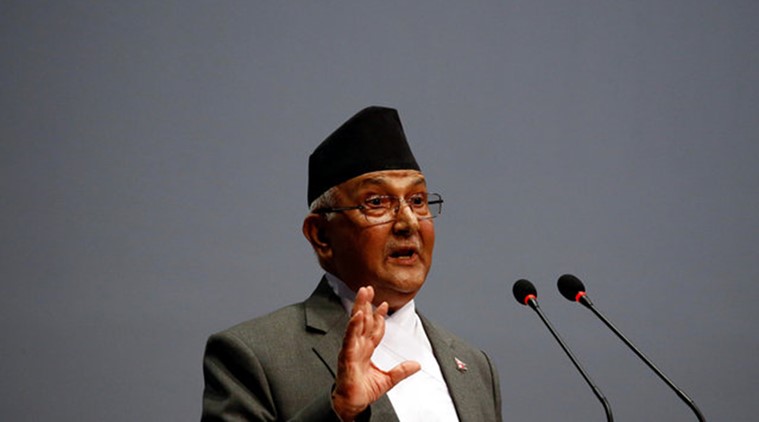 Nepal Prime Minister K P Sharma Oli (Reuters Photo)
Nepal Prime Minister K P Sharma Oli (Reuters Photo)
The Nepal government’s move to bring in a constitution amendment Bill to give legal sanctity to its new map following a territorial spat with India has been deferred for the time being.
On Wednesday, the government of Prime Minister K P Sharma Oli failed to table the scheduled Bill in Nepal’s parliament owing to differences within the ruling party and more time being sought by the main Opposition.
In New Delhi, government sources said South Block is “carefully following” the developments in Nepal where a “larger debate” is underway.
“Border issues are sensitive by nature and require trust and confidence to be resolved to mutual satisfaction. We note that there is a larger ongoing debate on this matter in Nepal. It underlines the seriousness of this issue. It also demonstrates the value being attached to relations between Nepal and India,” sources said.
India’s new road from Dharchula to Lipulekh as part of the Mansarovar Yatra route angered the Oli government which came out with a new map, adding to it an area of 370 sq km at the tri-junction of Nepal, India and China (Tibet) that India claims is its territory.
A constitution amendment Bill was negotiated to legitimize the alteration or addition of Kalapani, Lipulekh and Limpiyadhura to the new map – when it promulgated its constitution on September 20, 2015, Nepal said the country’s area and size would be as shown in the map published on the day.
A constitution amendment requires a two-thirds majority vote. The government is short of nine parliamentarians in the 275-member House of Representatives.
A section of the ruling coalition led by former Prime Minister Pushpa Kamal Dahal ‘Prachanda’, co-chairman of the ruling party, is said to have advised Prime Minister Oli to go slow on the issue.
In the meantime, the main Opposition Nepali Congress, which has 63 members in the House of Representatives, has sought more time to enable the “party central committee” to take a considered stand on the territorial issue. Party spokesman Bishwa Mohan Sharma, however, said it was committed to support the government on the territorial issue.
Two Terai-centered parties, Samajbadi Janata Party and Rastriya Janata Party, have been negotiating with the government to have their demands, including a more liberal approach on citizenship, adopted along with the constitution amendment Bill.
Kathmandu’s move to come out with a new map has led to disquiet in Delhi.
On May 20, Anurag Srivastava, spokesperson for the Ministry of External Affairs, said: “The Government of Nepal has released a revised official map of Nepal today that includes parts of Indian territory. This unilateral act is not based on historical facts and evidence. It is contrary to the bilateral understanding to resolve the outstanding boundary issues through diplomatic dialogue. Such artificial enlargement of territorial claims will not be accepted by India.”
He said Nepal is “well aware of India’s consistent position on this matter and we urge the Government of Nepal to refrain from such unjustified cartographic assertion and respect India’s sovereignty and territorial integrity. We hope that the Nepalese leadership will create a positive atmosphere for diplomatic dialogue to resolve the outstanding boundary issues.”